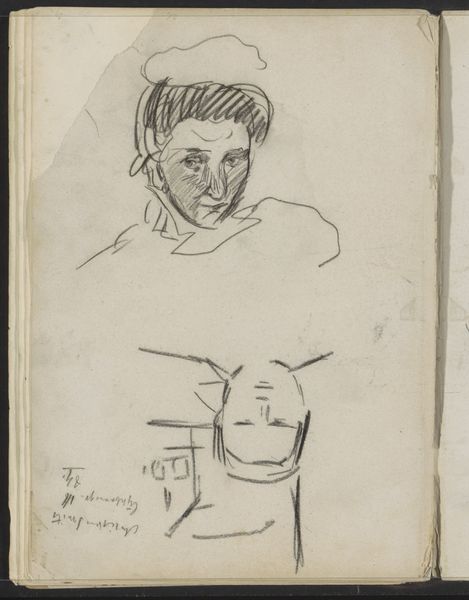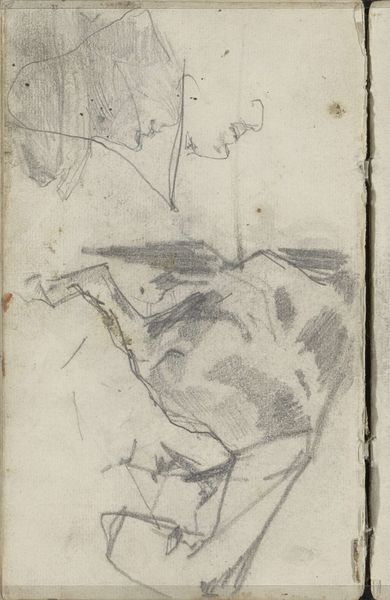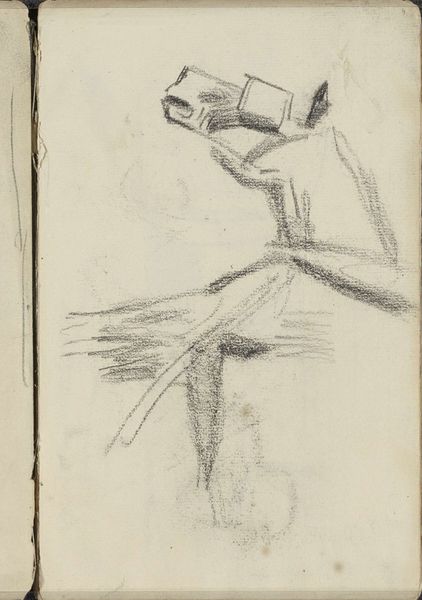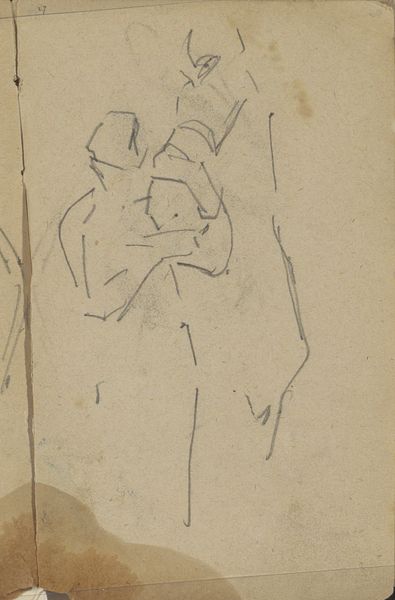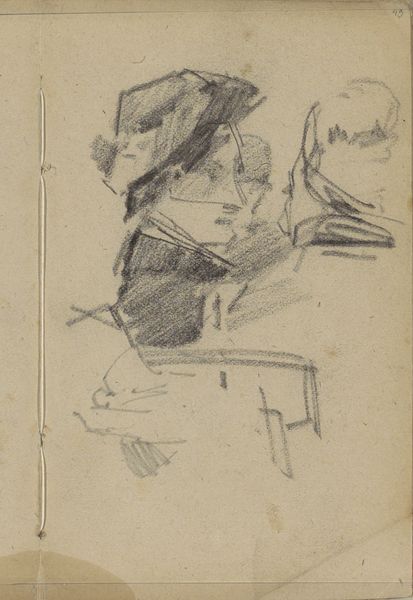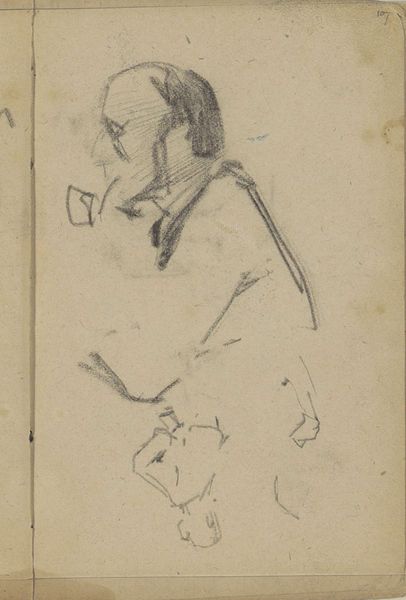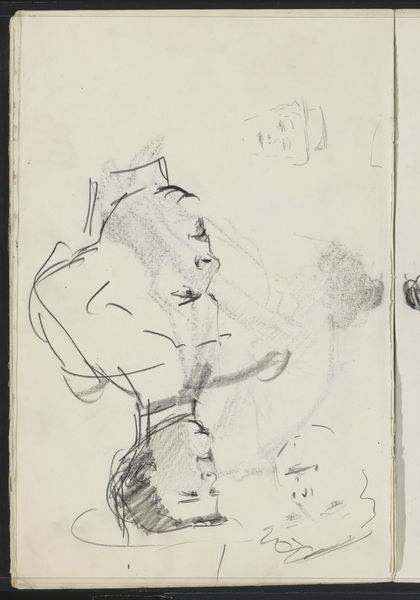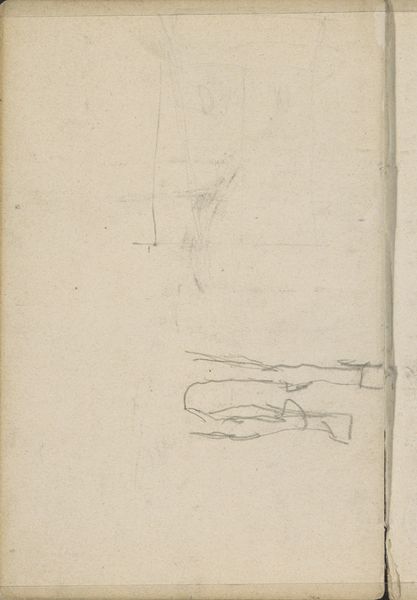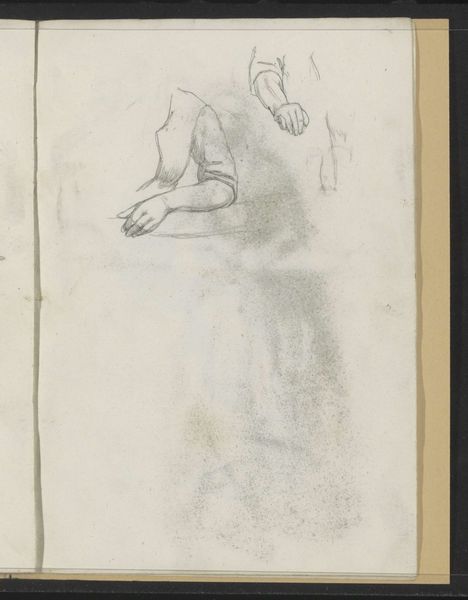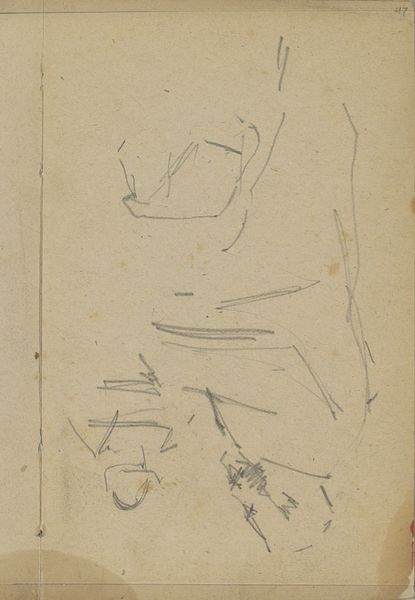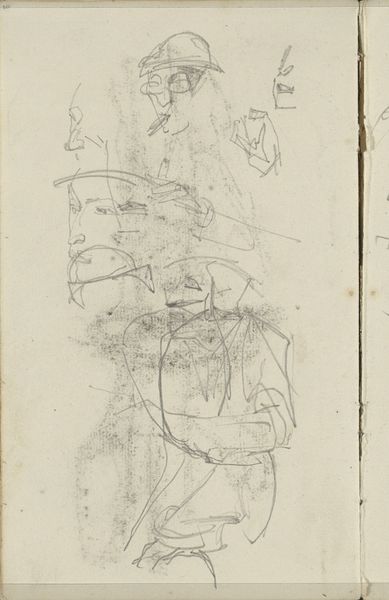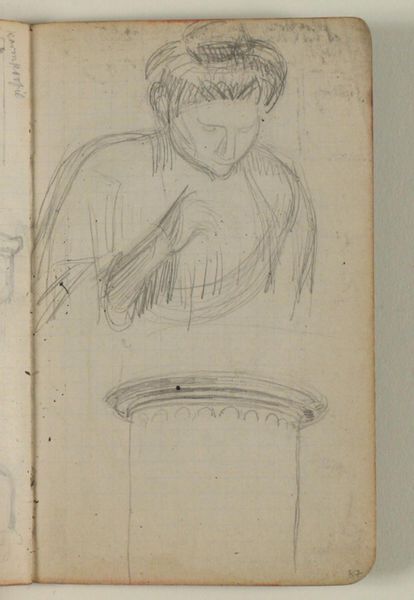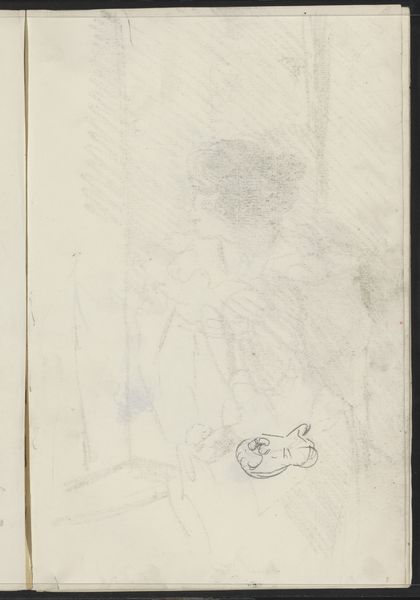
Copyright: Rijks Museum: Open Domain
Curator: Welcome. Before us, we see Isaac Israels's drawing, "Gezicht van een vrouw," created sometime between 1886 and 1934. It's currently held here at the Rijksmuseum. Editor: It feels… ephemeral. That soft pencil against the toned paper creates this fleeting impression. Like capturing a thought just as it appears. Curator: Indeed. Notice how Israels employs the subtlest gradations of tone. The light pencil work articulates form not through explicit outline but rather through a delicate interplay of shadow and highlight. See the economy of the lines and their structural clarity. Editor: The medium dictates the message, I think. The immediate nature of pencil suggests it’s a study, a record of fleeting interactions between the artist and the sitter. We don't know this woman, and it is this raw simplicity that communicates honesty and accessibility. Think about Israels holding his sketchbook and working "in the moment," with the tools at hand. Curator: Precisely. It echoes Impressionist tenets through a focus not on the detail of the figure, but on the artist’s subjective experience of viewing them. It favors capturing the atmosphere over strict representation, as shown in his application of rapid strokes. Editor: Considering Israels’s portraits in the 19th and 20th centuries often involved societal observations and a connection to working people and leisure activities, there is also the question about the identity of the portrayed woman: A wealthy patron? Someone of his social entourage? Someone met by chance? Curator: All compelling avenues to explore in subsequent scholarly work, definitely. We are prompted to reconsider how conventional hierarchies are undermined within portraiture itself by this image. Editor: This drawing presents a dialogue, really, between spontaneity and structure. It shows the physical presence and context of an artistic practice that embraces everyday realities. Curator: Ultimately, the drawing stands as a testament to the power of suggestion, leaving us pondering the unseen and inviting us to project our interpretations onto the artist’s rendering. Editor: It is a great reflection on the raw practice and context behind art, stripping away pretensions to meet its simple nature: paper, pencil, the artist, and their muse.
Comments
No comments
Be the first to comment and join the conversation on the ultimate creative platform.
